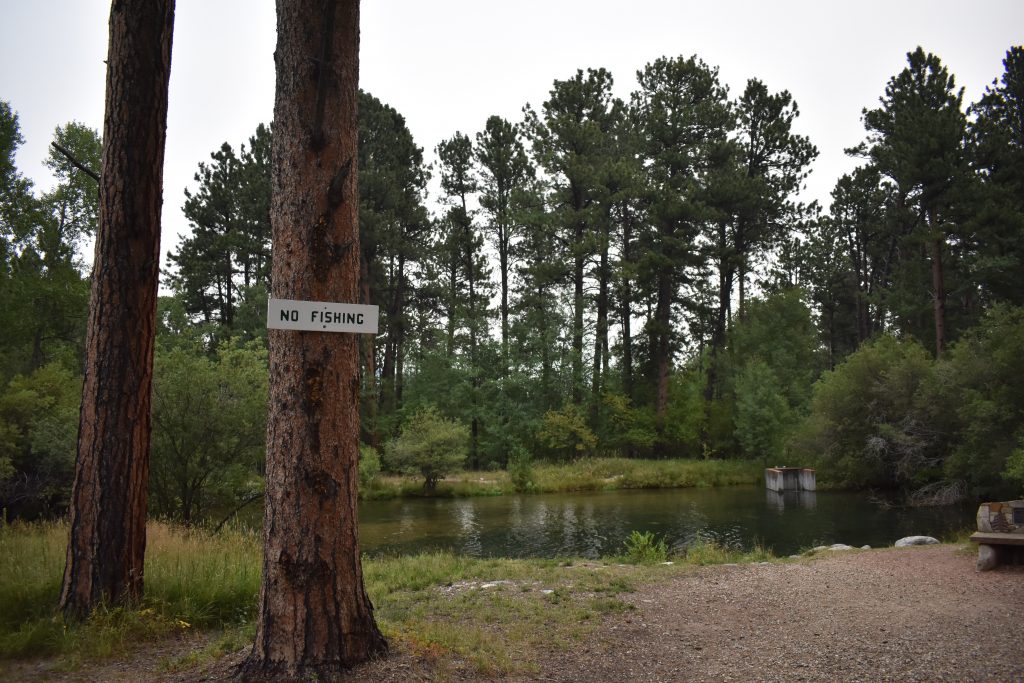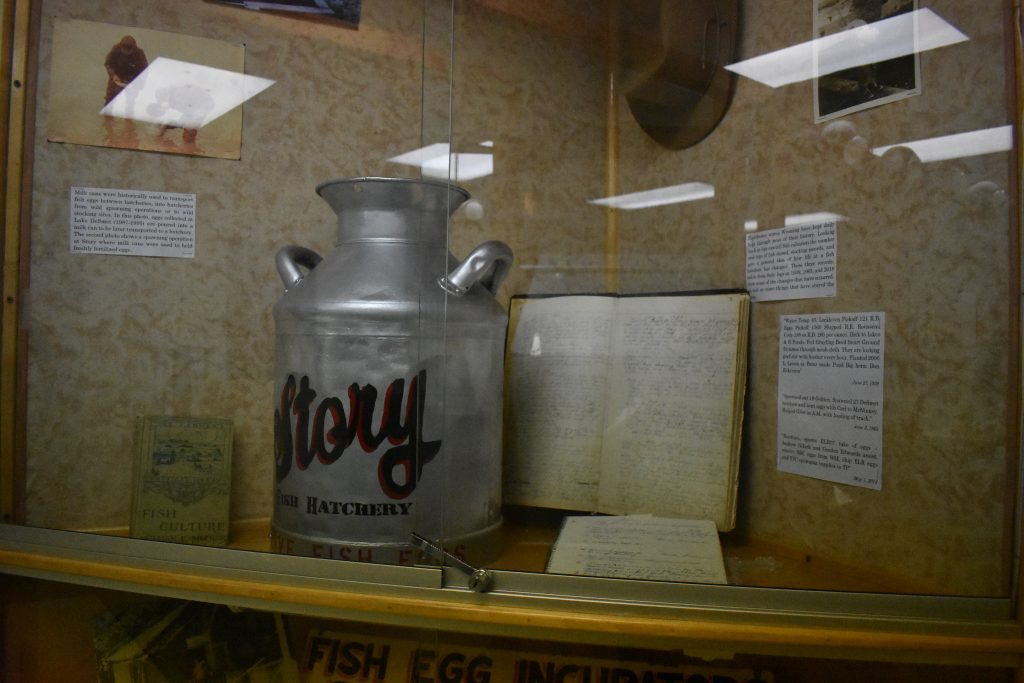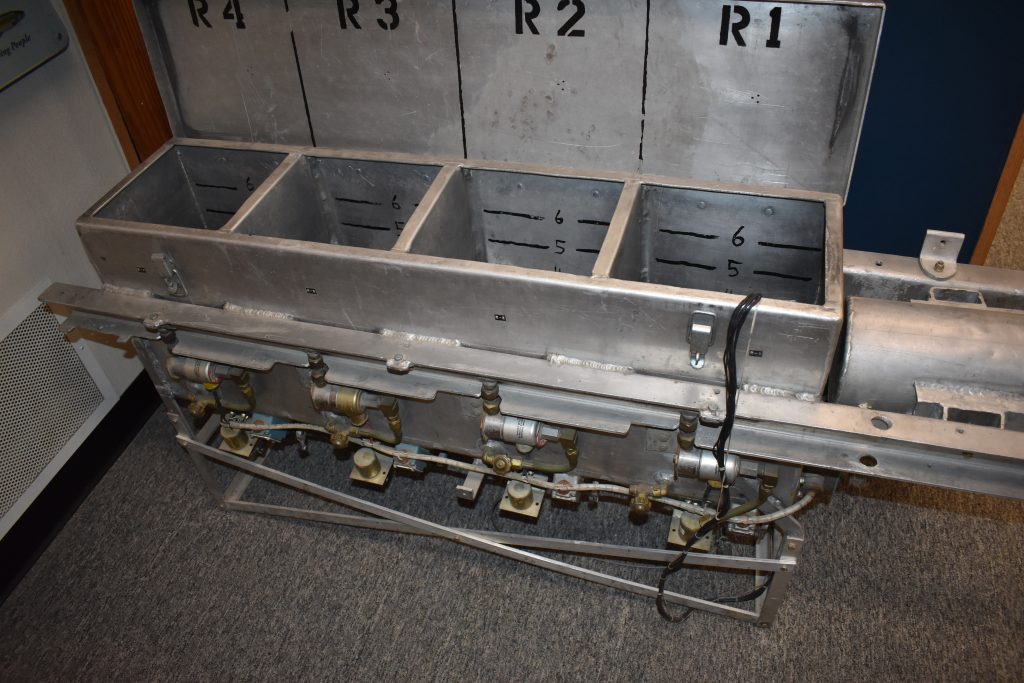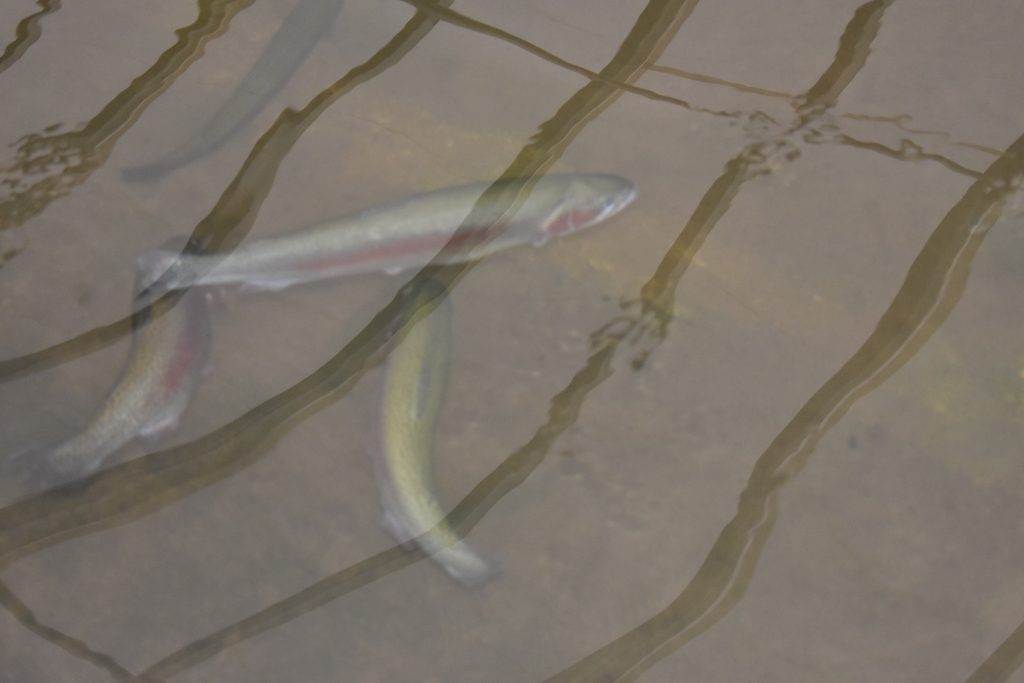News
Story Fish Hatchery Oldest in Wyoming
The Story Fish Hatchery is one of ten fish hatcheries in the state of Wyoming, and it is oldest continuously operating hatchery in the state.
In 1895, the state legislature authorized construction of a fish hatchery in Sheridan County. The first fish hatchery in Wyoming was started in 1884 in Laramie, but is no longer in operation.
The first Sheridan County hatchery was located on Wolf Creek, south of Dayton, on the Eaton Brother’s ranch land. In 1907 the hatchery was relocated to Story.
In a Sheridan Post article on Friday, June 4, 1909, it describes the building of the new hatchery.
FISH HATCHERY CONTRACT LET SOLIER CONSTRUCTION CO
Bids for the erection of the fish hatchery at the new location on Piney creek were opened Saturday by Superintendent Morgareidge. when the lowest and best bidder was found to be the Solier Construction company of this city, the price named being $5,769. This includes the construction of the hatchery building 40×50 feet, with a double battery troughs, forty in number, and sixteen feet in length, capable of hatching 2,000,000 fish eggs at one time; a superintendent’s residence 28×44, a story and a half with basement, and a barn 28×30 feet. The contract calls for the completion of the work by July 15th, and work will commence at once unless the late floods have so demoralized the roads and bridges that it will be impossible to haul out the material.
The location of the new hatchery is considered an ideal one. The state owns 160 acres of land at the foot of the Big Horn mountains on which there is a large spring of pure mountain water of the desired temperature.
It is close to one of the finest summer resorts in the country, and but a little further from Sheridan than the old hatchery. The greatest advantage, however, is in the abundant supply of water, precluding the possibility of loss of fish in the trays.
The old hatchery building and grounds on Wolf Creek has been sold to Eaton Brothers in whose lands it is located, for the sum of $2,250, possession to be given October 1st, after the summer hatch of 1,000.000 fish has been made.
Eaton Brothers own and conduct an extensive summer resort for eastern tourists, at the mouth of Wolf Creek Canyon, and it is understood they will utilize the hatchery and ponds to supply their own demands for fish.
Superintendent Morgareidge was in Sheridan Wednesday and received a consignment of 100,000 steel-head trout eggs from the government hatchery at Concrete, Wash., which will be placed upon the trays at once and the process of incubation started.
He stated to a Post representative that he will hatch and plant in the streams of Northern Wyoming this year 1,000,000 of the several varieties of game fish suited to these waters.

Water is probably the most important factor in rearing fish. According to the Wyoming Game and Fish, Story has three different water sources. South Piney Creek flows ½ mile through some underground caverns and emerges at what is called the Big Spring. This is the original water source for the facility and the variable water flows and the 34-52 F temperatures mimic conditions seen in nature which is excellent for rearing brood stocks.
There is also water from the Little Spring, where the water flow is not as much as the other sources, but the lack of silt and moderate temperature (37-48 F) make it ideal for incubating eggs. There is also an artesian well and the water from that was re-routed in 2009 to the new incubator room. Although the artesian well contains some fine silt, it has a steady flow or water.
At first, the hatchery obtained the eggs for the fish rearing operation in Lake DeSmet, which was for years considered to be an area that had good quality trout eggs.
An article in a May 1924 Sheridan Post-Enterprise informed the public that Shell Creek and the Leiter ditch were closed so the game and fish could trap spawning trout. T R. Bard and J. Bliss Bavne. assistant state game and fish commissioners, supervised the work in the streams near Lake DeSmet.
Bard and Bayne erected fish traps to catch the spawning trout so the eggs can be taken from them to the Story Hatchery. The article said that each female trout has from 2,000 to 3,000 eggs, and it went on to say that fishing in Lake DeSmet will also be closed until the spawning operation is complete.
According to Becca Meigel, fish culturist at the Story facility, said that they no longer use Lake DeSmet for a spawning operation, but they use mainly captive brood stock for hatching. “We know the genetics and know they are a pure strain,” Meigel said. They also want to make sure that the genetics in the brood stock are not too close.
The Story Hatchery currently houses five different brood stocks from which seven species of eggs are spawned (collected). Each year, the facility collects from five to six million eggs, depending on needs.
Once the fish were hatched at Story, and obtained fingerling size, about 2 to 3 inches long, they could be planted in area lakes and streams. At one time the fish were transported in milk cans, and were moved to area lakes via wagon and later, in a pickup.

In the Sheridan Post-Enterprise November 11, 1923 Twenty 10 gallon cans, containing about 40,000 fingerling rainbow and mackinaw trout, were taken from the Story fish hatchery Saturday by Horace Dillon, the caretaker, and T. R. Bard, deputy state fish and game warden, for planting in the mountains and Big and Little Goose creeks.
In the Sheridan Post on Tuesday, August 10, 1920 Headlined –
FISH FRY FOR LAKE DESMET Historic Lake to be Stocked With Cat Fish, Perch and Bass From Government Hatchery. Thirty five or forty cans of small catfish, perch, and bass will be received tonight by Charles W. Morjrareidge, who will plant them in Lake DeSmet
These fish are very uncommon in the streams throughout this country, and they are the first of their kind to be placed in Lake De Smet for about twelve or fifteen years. They are being shipped from Jacksonville, Illinois, where the government maintains a fish hatchery.
Mr. Morgareidge will take them immediately to Lake DeSmet, and they should be full grown in from two or three years.
The adherents of Isaac Walton should find a great deal of pleasure at this Lake about 1923.
At the visitor’s center is a long metal box with four compartments that open at the bottom like a large funnel. It is a helicopter stock tank, for stocking high mountain lakes where the terrain is too rough for a pickup. Started in the 1970’s, this usually takes place in July and August.
The fish are loaded into the cylinder shaped tanks, which are attached to the helicopter by a cable. Each tank holds five to eight gallons of water and 10 to 25 pounds of small fish.

Each tank has a door that opens at the bottom to release the fish as the helicopter maneuvers the tank to approximately ten feet above the lake before the canisters are opened, dropping the fish into the lake.
At one time the Game and Fish worked with area ranchers and would supply them with fish for the farm ponds if the landowner would allow public fishing in the waters. In a Sheridan Post, March 3, 1920 article, Persons wanting trout for planting should make application to the county clerk. 35,000 will be turned over to the county for distribution, by the Story Hatchery, May 15.
Today,fish and eggs at all Wyoming state hatcheries are for stocking into public waters and cannot be sold to private individuals.
Currently, the Story Hatchery has a hatchery building, that contains a visitors center, restrooms and a trough room where smaller fish and golden trout brood stock are held, and covered ‘raceways’ (long concrete tanks) holding several large fish. Meigel said that these raceways house the brown trout brood stock, and one raceway, that visitors can walk alongside, holds five year old Eagle Lake Rainbows, some which are large in size.

Today, one can visit the Story Fish Hatchery grounds and visitor center to learn more about the hatchery and the fish in Wyoming waters. Grounds are open 8-5 Daily, and the Visitor Center is open from 8 to 4:30, except for Thanksgiving and Christmas.


David Stevenson
September 5, 2021 at 5:38 pm
My Dad and Wm. Springer packed fish in by horseback in the late 40’s and early 50’s into some of the high mountain lakes. Infusing oxygen into the milk cans so the fingerlings would survive the trip.